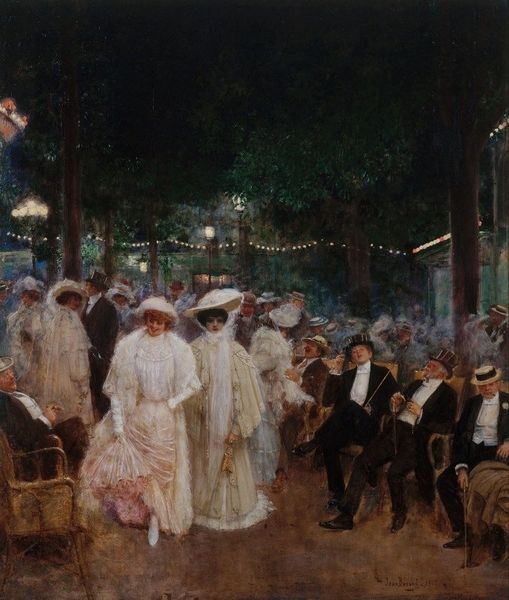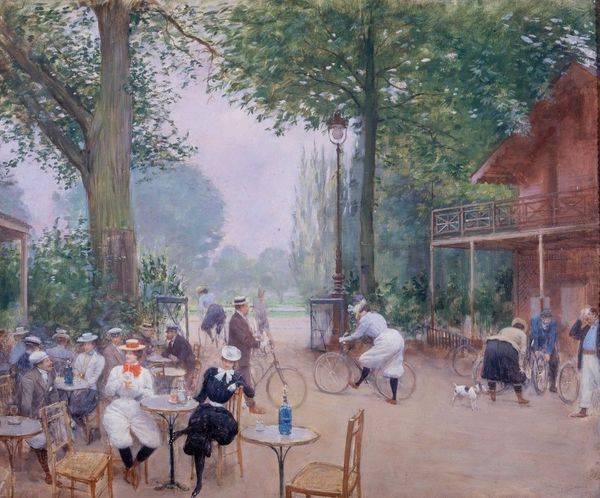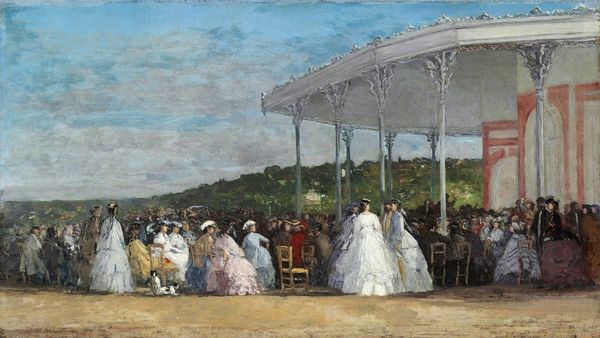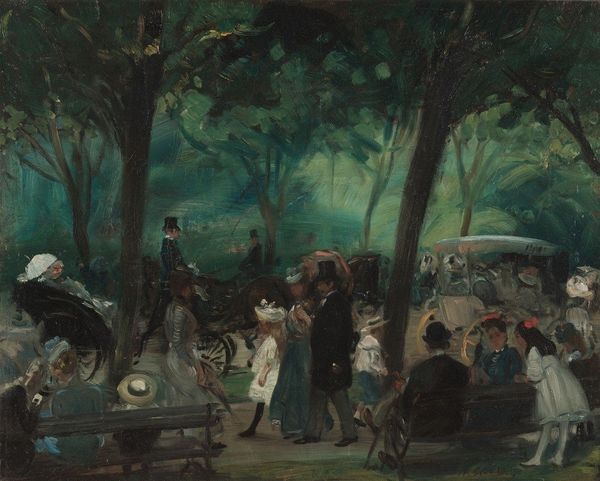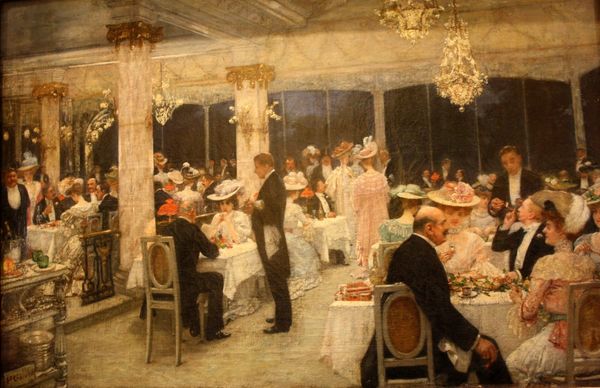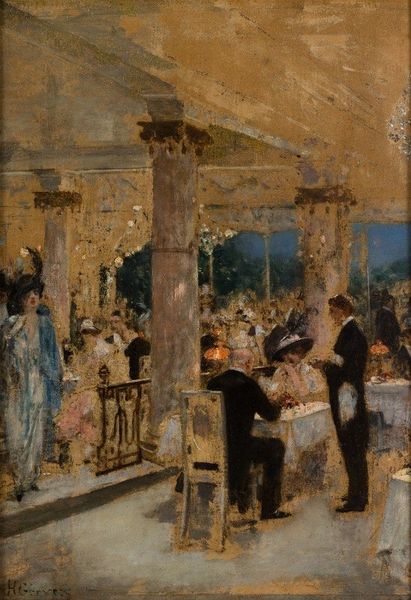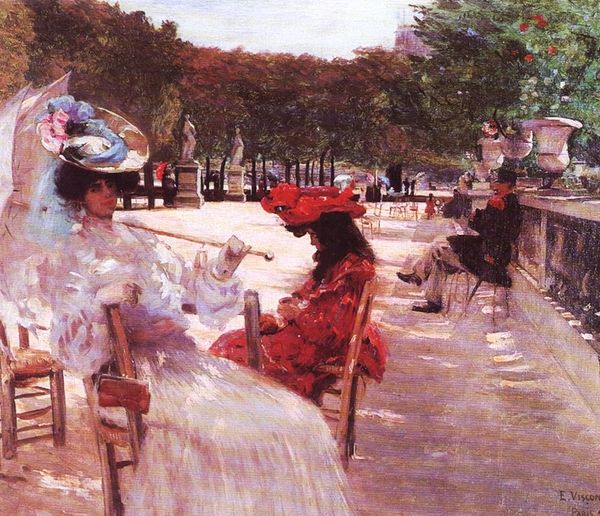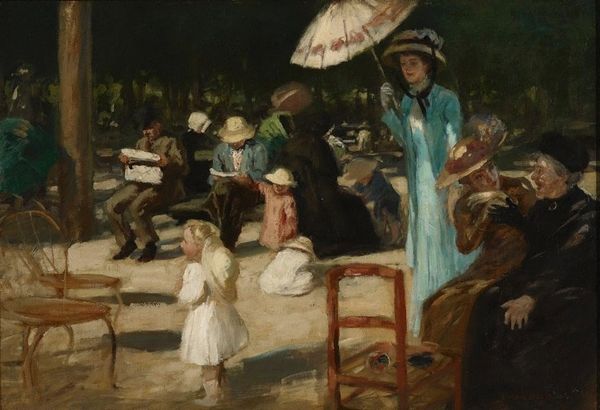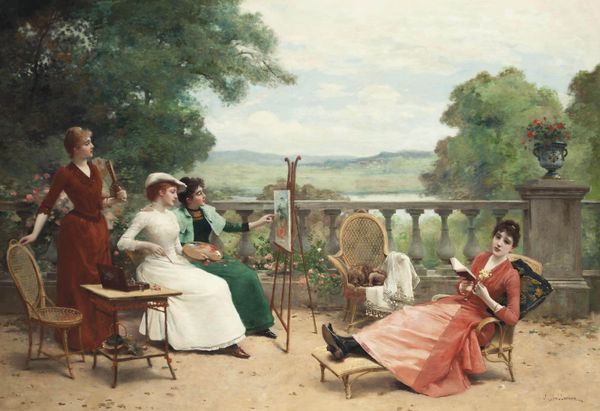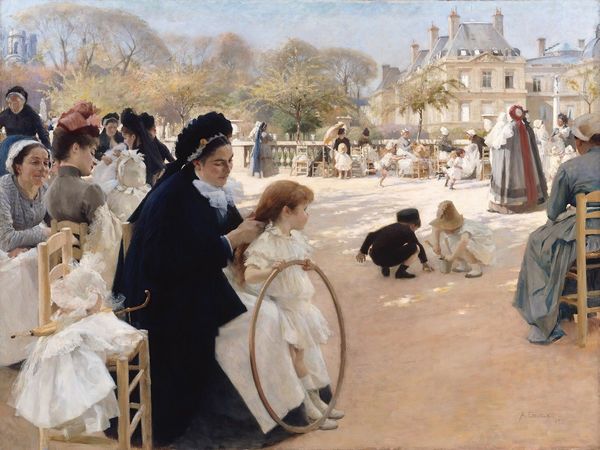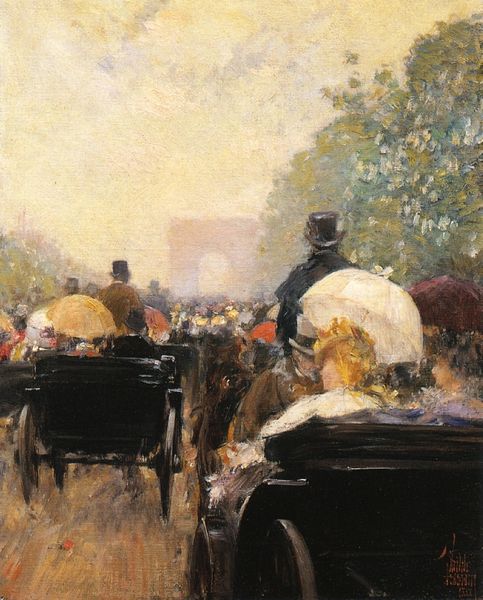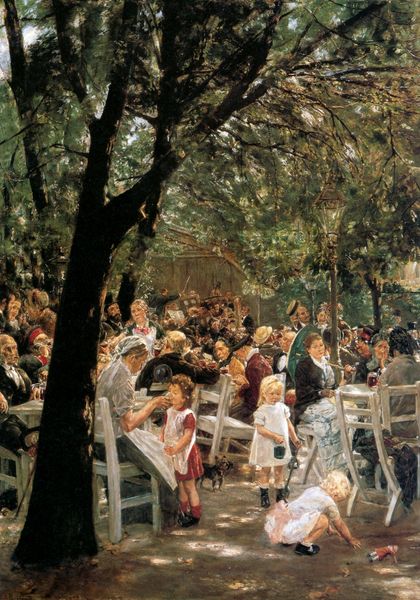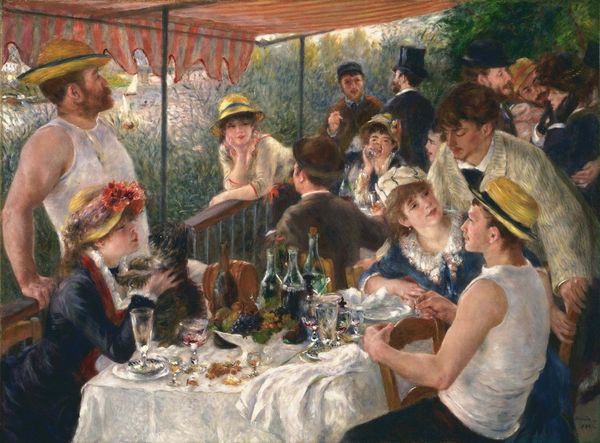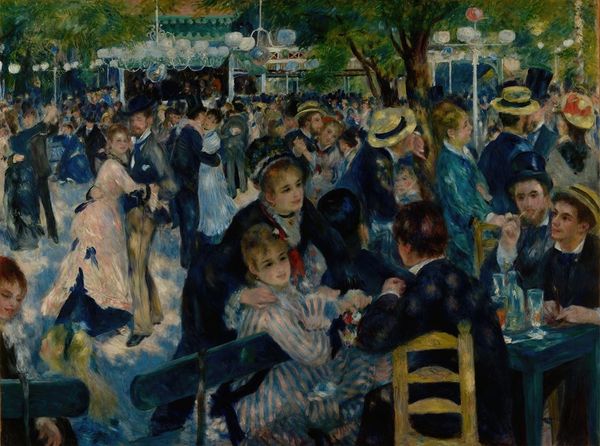
Copyright: Public Domain: Artvee
Editor: This is "Le Cercle de l’île de Puteaux" by Henri Gervex, painted in 1907 with oil paint. The scene is so lively and vibrant, I love the detail in all the outfits! What do you see when you look at this work? Curator: I see a vivid depiction of leisure, but let’s dig deeper into the conditions that allowed such a scene. Look at the brushwork: loose and suggestive. This reflects not just Impressionistic aesthetics, but a societal shift. This scene of middle-class leisure became marketable through reproductive prints; a process involving laborers whose effort contrasts starkly with the painting’s subject. Editor: That’s interesting; I hadn't considered the laborers who worked on reproductive prints and engravings! How did Gervex negotiate that? Curator: By participating, of course! Gervex made his living selling to and engaging with the wealthy merchant class. The scene celebrates consumption, showcasing material excess in the clothing and leisurely activities made possible by specific socio-economic conditions of the Belle Époque. How does it strike you differently now? Editor: It definitely changes my perspective, now noticing how focused everyone is on appearance and on just *being* seen. They are the consumers as much as the consumed! This art reflects those conditions of economic possibility! Curator: Exactly. The materiality of the oil paint itself emphasizes a cultural reality beyond the idealized surface. This seemingly innocent gathering participates in the construction of social stratification! Editor: That’s given me a lot to think about! Considering not just what the painting depicts, but *how* it came to be and its place in society opens up so much more. Curator: Indeed, and the artist's position within that structure, that's key to interpreting this piece.
Comments
No comments
Be the first to comment and join the conversation on the ultimate creative platform.
